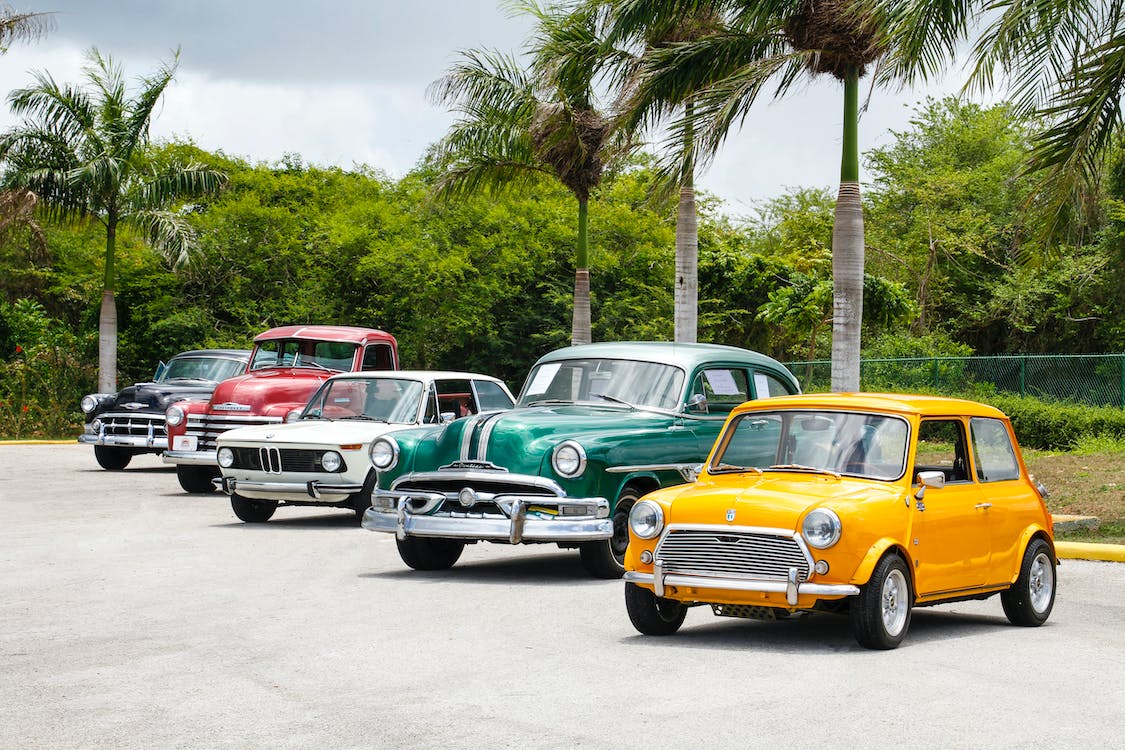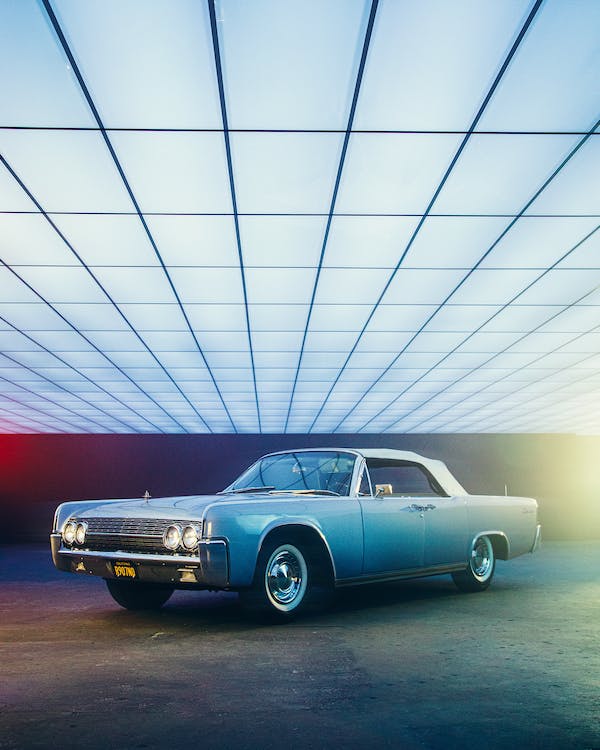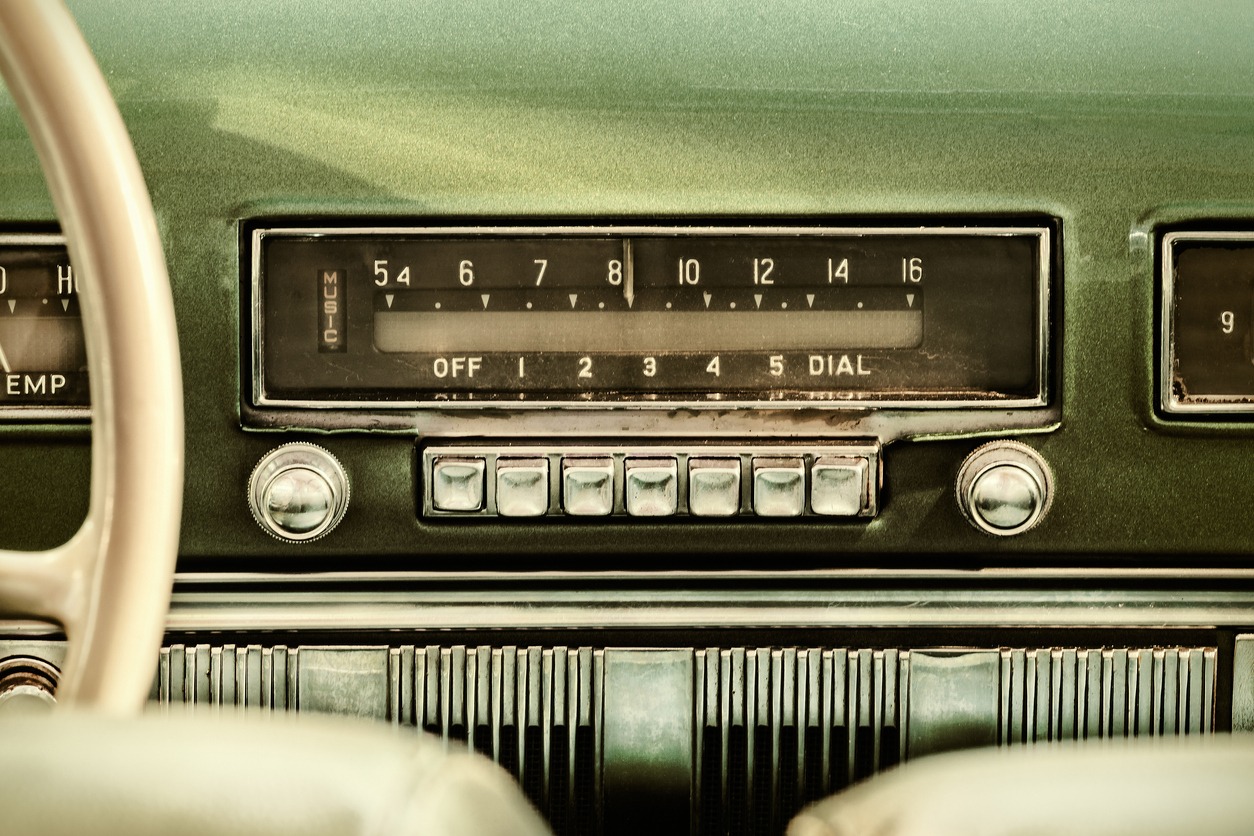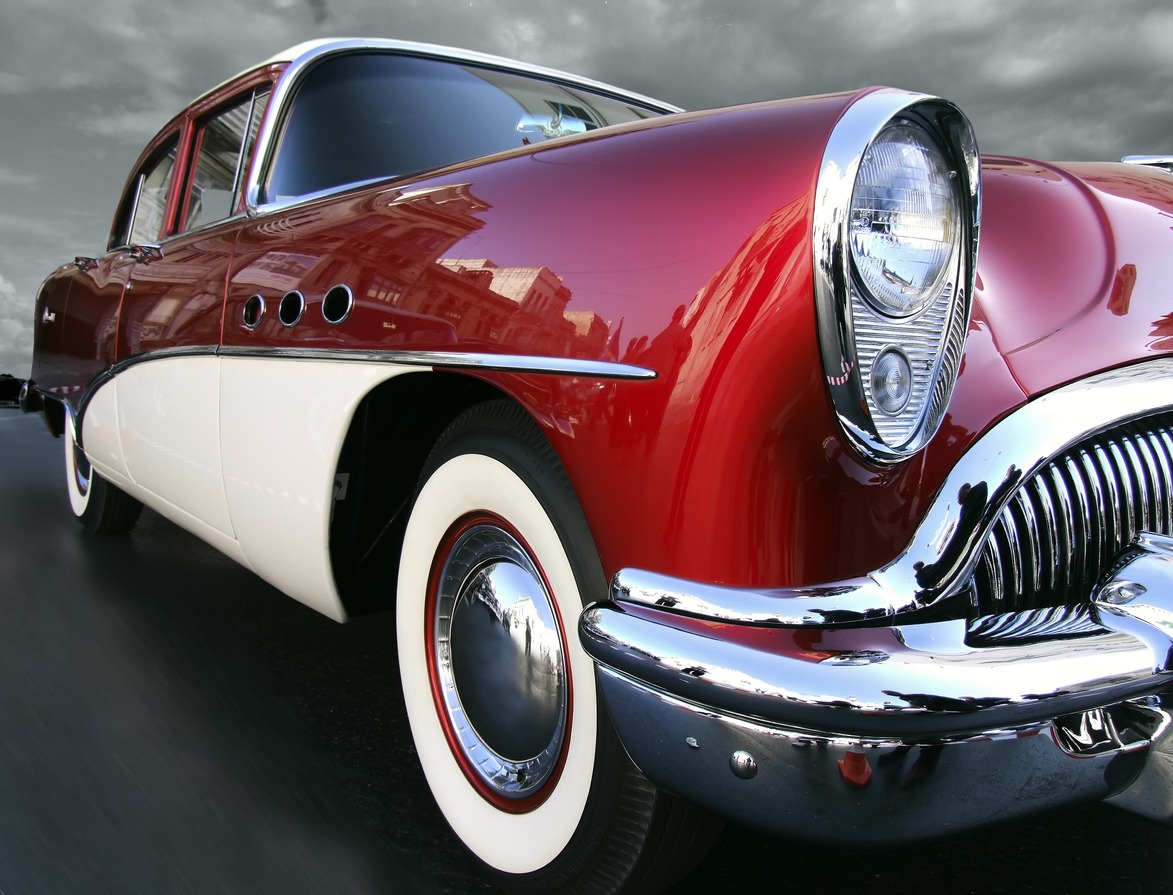If you’ve got a car that you’re proud of, it’s just normal to want to capture some memorable and sharable photos of your precious possession. But with a little extra thought and effort, you can take photos that you’ll treasure just as much as your classic ride.
Every vintage car tells its own tale; your photos should bring that story to life. This article will give you helpful tips to help you take a great picture and capture the nostalgia and allure it holds.
Why Take Photos of Classic Cars?
Even if you’re not the owner of a classic car, this niche of photography can be really interesting. Vintage cars are great to look at, and their unique details are not commonly seen nowadays. By taking amazing photos of these timeless machines, you can help preserve a piece of history. These cars are compelling photography subjects for several reasons:
- Classic cars possess a timeless aesthetic appeal. Their distinctive lines, curves, and details stand out, making them visually intriguing subjects. The way light plays off chrome bumpers, the texture of a well-worn leather seat, or the intricate design of a classic grille can all make for stunning photographs.
- Each classic car has a story.Whether it’s a rusted Ford Mustang that’s seen better days or a perfectly restored Volkswagen Beetle, these vehicles can evoke emotions and narratives. Photographers can use these elements to create images that tell a story or evoke a sense of nostalgia.
- The vibrant colors and unique designsof classic cars provide a wealth of opportunities for creative photography. From the pastel hues of the 1950s to the bold and bright colors of the 1960s and 1970s, these cars can add a pop of color and visual interest to any photograph.
- Classic cars are often seen as icons of their time, reflecting the cultural and societal trends of their era. Capturing them can also be a way to document and reflect on the past, offering a window into different periods of automotive and social history.
Tips for Classic Car Photography
To take great photos of classic cars, here are some tips you may want to follow:
Pick a good location
Great photographers know the magic of picking just the right scene. A poorly chosen background can really take away from a good car photo. After all, it’s hard to admire the sleek design of a car if it’s surrounded by chaos. Here are some great tips to keep in mind:
- Choose a good background.The perfect spot should make the car pop, not get lost in the hustle and bustle of a busy area, or be overshadowed by flashy buildings. A good background should let the car shine, not compete for attention. Think quaint streets, peaceful fields, or walls with character – these are your go-to canvases.
It’s always best to choose locations that complement the style and era of the car. For example, a 1950s Cadillac might look striking in front of a vintage diner, while a 1960s sports car could be well-suited to a modern cityscape or winding coastal road.
- Make sure to avoid distractions.A busy or cluttered background can detract from the subject. Look for simple, uncluttered spaces that allow the car to stand out.
Check the reflections on shiny car surfaces, as they can be quite the photo bombers! If the landscape is too lovely to look at, zoom in on the car to keep it as the star of your photographs.
- Choose a backdrop to tell a story. Vintage cars have a lot of history, and the setting can tell that story or complement it somehow. It doesn’t mean that you need to take a photo of the car in a historically accurate background – though that would be cool – but pick your location thoughtfully. What do you want people to feel or think when they see your photo beyond admiring the car?
- Try natural settings.In our normal, everyday life, cars are often found in mundane spots – on the road, in parking lots, or sitting in driveways. These places don’t offer much in the way of visual flair. In this case, you may want to consider the beauty of natural landscapes. A classic car photographed in a scenic countryside, desert, or seaside location can create a stunning contrast between man-made and natural beauty.
And for those chasing rustic charm, a hilltop at sunset is pretty unbeatable. Picking a great spot opens up a world of artistic possibilities.
- Consider urban environments. In contrast, urban settings can provide a gritty, realistic backdrop that adds character and context to the photograph. But if you’re after a bit of an edgy vibe, try an industrial area with cool warehouses or the top floor of a parking garage with sweeping city views. For a touch of class, the sleek, modern backdrops of a city business district work wonders. Though it may provide a stark contrast – a vintage car in a modern city – it can produce interesting photos when done right.
- Don’t go overboard.While you may drive the car somewhere pretty or interesting for a photo, think twice before placing that classic car in a spot where it might look out of place. Like a car in the middle of a wilderness, for example. No need to go overboard with wild location choices that stray too far from where you’d expect to see these beauties.
Be sure to provide proper lighting
Lighting can make or break a photo – it can make a difference between an ordinary photo and a mesmerizing artwork. To bring out the best in your classic car shots, here are some tips to harness the power of light effectively.
- Chase the golden hours.As much as possible, schedule your photo shoots around dawn or dusk. The soft, natural light during these times casts a warm, low-angle glow, perfect for highlighting the curves and details of classic cars. This kind of light is gentle, avoiding harsh shadows and overexposure. Avoid high noon, as the high sun creates too much contrast, with deep shadows and overly bright spots.
- Be mindful of reflections.As mentioned earlier, be aware of what’s reflected in the windows and body of the car. Avoid capturing unintended images, like yourself snapping the photo or an unsightly background. Instead, choose reflections that add to the composition, like a beautiful skyline or trees.
- Use artificial light carefully.Not all photography happens outdoors; sometimes, you might be in a studio or a garage. When using artificial lighting, the approach is to add light source by source. Highlight specific aspects or angles of the car, take a few test shots, and adjust as needed. This method prevents over-illuminating the car and allows for more controlled, creative lighting.
- Scout and pre-visualize.Before you start shooting, take a walk around the car. Observe how the light falls on it and pre-visualize your shots. Think about the image you want to create and position yourself to achieve that effect with the available light.
- Use a polarizer filter.This handy tool minimizes distracting reflections and is especially effective when you’re at a 90-degree angle to the sun. It can also help saturate the sky, making the car stand out more.
- Be wary of intense hot spots from the sun.These can reflect off the car. Change your angle or wait for the right cloud cover to diffuse the light.
Focus on details
When you’re up close and personal with a classic vintage car, every little feature can catch your eye. As a photographer, your challenge is to guide your viewer’s attention to where you want it. This is all about managing the clutter in your frame, choosing your angles thoughtfully, and being mindful of your background. Essentially, you’re unlocking the endless photographic potential a car presents.
Focusing on the finer details can turn a simple part of your car into the star of your shot. Whether it’s the elegant curve of a hood ornament, the classic design of vintage tires, the gleam of headlights, or any unique feature your car boasts – these elements can transform into stunning visuals. They invite the viewer to appreciate the distinct qualities that make your car a true masterpiece.
Interior details are equally captivating. From the repeated appearances of manufacturer logos to unique design elements, these deserve the spotlight, too. Make sure you have enough light, especially for those evening shots, to bring out the best in these details. Sometimes, studio lights can help enhance what natural light might miss.
And lastly, here’s a tip that can’t be overstated – cleanliness is key. Any speck of dirt can stand out in a photo, so give your car a thorough wash and wax before the shoot. If you’re heading to a remote location for the shoot, wash and wipe the car there to remove any dust and grime accumulated en route.
Control your depth of field
If you’re new to photography, controlling the depth of field means deciding how much of your image is sharp and how much is blurred by adjusting aperture. The smaller your aperture (larger f-stop number), the greater the area of focus on your image. Meanwhile, using a larger aperture (a smaller f-stop number) and a longer lens narrows your focus area. This means whatever you want to highlight – say, the sleek lines of a car’s hood or the intricate design of a grille – remains sharp while the rest of the image gently blurs into the background.
Getting this right is a mix of practice and play. Don’t shy away from experimenting with different aperture settings and lens choices. Try various combinations to see how they affect your image’s depth of field. A short lens at f/5.6, for example, will give you a wider area of focus compared to a telephoto lens in the same setting.
Use photography accessories
Besides your DSLR or mirrorless camera and the lens it comes with, here are some other tools and accessories that can help you capture better photos:
1. Polarizer
Ever set up the perfect shot only to have it ruined by a harsh glare of a window or the car’s shiny surface? Enter the polarizer. This nifty tool helps reduce glare, which is particularly crucial during those golden hours at dawn or dusk. By reducing reflections, a polarizer not only improves the quality of your photos but also broadens the range of shots you can masterfully capture.
2. Prime lenses
While zoom lenses offer versatility, they come with a higher price tag and can be trickier for beginners to handle. With their fixed focal lengths, prime lenses are a blessing for amateur photographers. They allow you to quickly grasp how to frame stunning shots without getting overwhelmed by too many variables. Plus, having a few different prime lenses means you still have the flexibility to capture various types of photos.
3. Wide-angle lenses
A wide-angle or fish-eye lens can provide you with some fun, unique perspectives. Try shooting from a really low angle to add an interesting twist to your car photos. A lens between 15mm and 37mm is usually great for this.
4. Macro and medium telephoto lenses
These kinds of lenses are great for close-up shots of the car’s finer details – think hood ornaments, wheels, or the intricacies of the car interior. These allow you to capture the smaller, often overlooked elements. For instance, a 16mm f/1.4 lens (equivalent to a 24mm lens) is excellent for getting up close with your subject and playing around with depth of field.
5. Tripod or monopod
Don’t forget to pack a tripod or monopod, especially on overcast days or when shooting in the low light of early morning or late evening. Slower shutter speeds might be needed due to the lower light levels, and keeping your camera steady is crucial for crisp, clear images unless, of course, you’re going for a deliberate blur.
Feel free to explore different angles and perspectives
When it comes to taking photos of classic cars, the angle and perspective you choose can transform a standard photo into an extraordinary one. It’s not just about aesthetics – it’s about shifting the viewer’s perception and making the familiar seem new and exciting. After all, a vintage car is far from ordinary and shouldn’t be captured in an everyday, eye-level manner. So here are some tips and suggestions when taking photos from different angles and perspectives:
- Don’t take photos at eye level.We see cars every day at eye level, so this perspective is too common and often unflattering for photography. Since most people don’t get to see a vintage car every day, make it more interesting by taking photos from different angles.
- Get creative with your angles.High angles, like shooting from a second-story window, can showcase hood art or a full-body paint job, while low angles, like kneeling or placing the camera on the ground, can give the car an aggressive, imposing look. These angles also help to shield distracting background elements, focusing the viewer’s attention on the car.
- Focus on details.Small changes, like turning the wheels, can add interest and dimension. Focus on unique features like alloy wheels, fancy shifters, pedals, or leather stitching. These details might be familiar from the outside but offer a new perspective through your lens.
- Suggest motion with camera tilt.Tilting the camera so the car appears diagonal in the frame can suggest motion as if the car is about to drive out of the photo. It’s a simple trick that adds a sense of energy and movement.
- Try walking around the car and taking photos from various points.This technique is particularly effective with paint jobs that change color depending on the angle. Plus, it offers a comprehensive view of the car.
- Don’t forget the less-seen partslike suspensions and undercarriages. Using ramps or jack stands to elevate the car can provide a unique view that’s often overlooked.
- Take front and rear three-quarter shots:Classic car photography staples are the front and rear three-quarter shots taken from a kneeling or sitting position. These allow you to capture all four wheels and the car’s overall stance, consistently pleasing to the viewer.
Frame it right
Framing is key in photography, especially when your subject is a classic car. Here are some easy-to-follow tips to ensure your car photos stand out for all the right reasons:
- Check the background first. Before you focus on the car, take a good look at what’s behind it. If thebackground is busy with people, buildings, or distractions like poles and signs, find an angle that minimizes the clutter. A cleaner background means your car is the star of the show.
- Capture the essence of the location. When you’re out and about, not just at car shows, use the surroundings to add context to your photo. In a city or countryside setting, a background that tells a story about the location can add depth to your image. Don’t shy away from including passersby or even the driver and passengers to give life to the scene.
- Wait for the perfect moment. Sometimes, you find the perfect backdrop, but the subject isn’t quite right. Be patient. For instance, you can wait for a car in just the right color to match the scene. The wait can be worth it for that perfect shot.
- Be patient with people.If people in your shot are distracting, wait for them to move. Always double-check for unwanted reflections in windows, including your own, or partial glimpses of people like an arm or shoulder. These little details are easy to miss at the moment but stand out when you’re reviewing your photos.
- Use creative techniques to reduce clutter.Play around with your camera settings. Adjusting your depth of field to blur the background or foreground can help focus attention on the car. Or try overexposing to create a high-key image that naturally dims down a busy background.
- Fix it in post-processing.If all else fails and you’re still stuck with clutter, use post-processing to your advantage. Cloning and cropping can be great tools to tidy up your composition. Plan your shot with these edits in mind to make sure you don’t compromise the overall look of your photo.
Get necessary permits and observe good etiquette
When photographing classic cars – especially those you don’t own – it’s essential to navigate both legal and ethical considerations. It’s important to respect the rights of car owners and adhere to legal guidelines when needed so you won’t get into trouble. Here are some tips to remember:
- If the car is privately owned, always seek permission from the owner before taking photographs. This is a legal courtesy and a sign of respect for their property. Be clear about how you intend to use the images. If you plan to use them commercially, you may need a signed release from the car owner.
- Understand the difference between public and private spaces. While photographing in public spaces is generally permissible, taking photos on private property (including parked cars in private lots) requires permission from the property owner.
- Some classic cars might be considered works of art or have trademarked designs. Be aware of these nuances, especially if you plan to use the images commercially.
- When taking photos at car shows or events, be mindful of others trying to view or photograph the cars. Don’t block views or spend excessive time in front of a single vehicle.
- Engage respectfully with car owners and enthusiasts. Many owners are proud of their cars and will be happy to talk about them, which can provide valuable insights for your photography.
- Never touch a car without explicit permission. Classic cars are often prized possessions with significant monetary and sentimental value.
- Be careful with your equipment, especially in crowded spaces. Tripods, large bags, or other gear can be obtrusive or cause accidents.
- Be considerate of the environment and surroundings. Leave no trace of your presence after the shoot, especially in natural or private settings.
- If you take pictures of privately owned cars, consider offering to share copies of the images with the owners. It’s a gesture of goodwill and can help build relationships within the classic car community.




